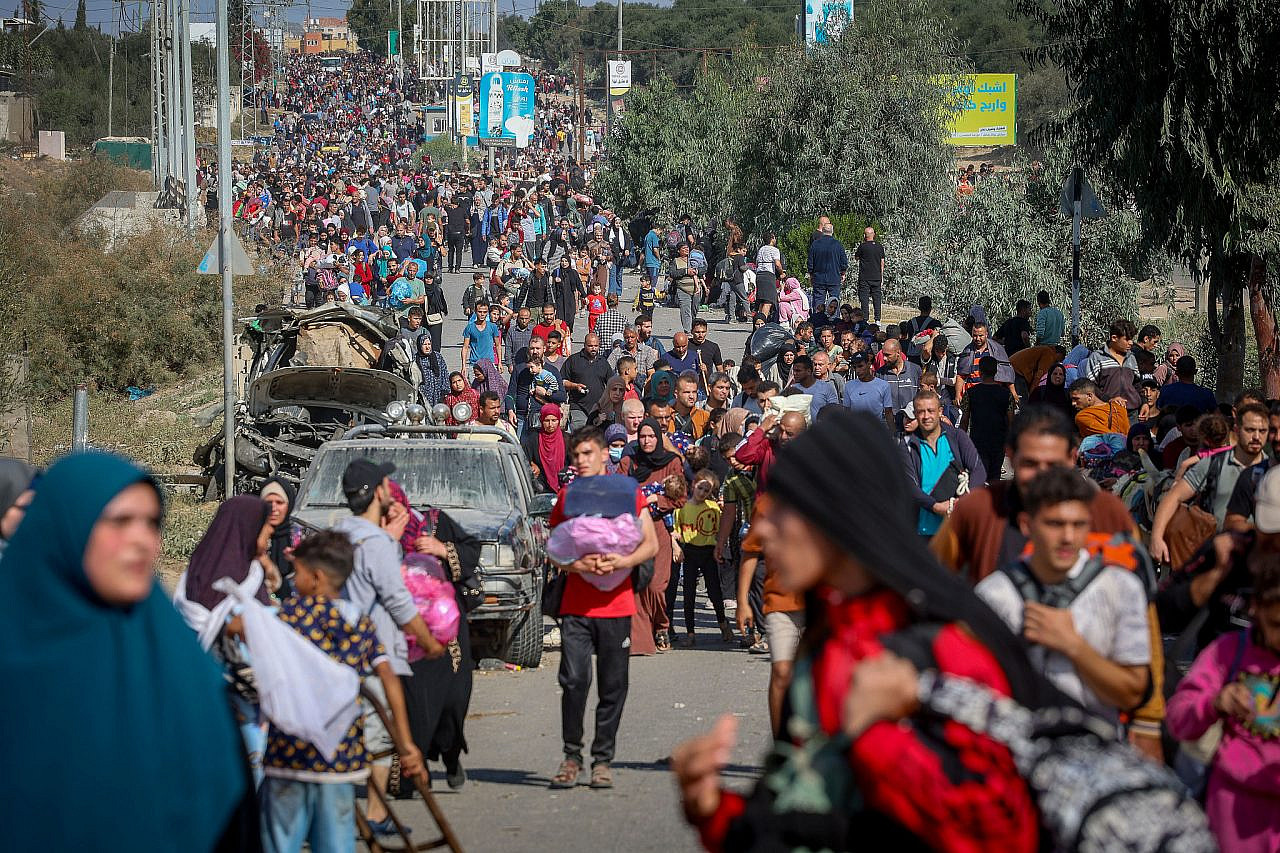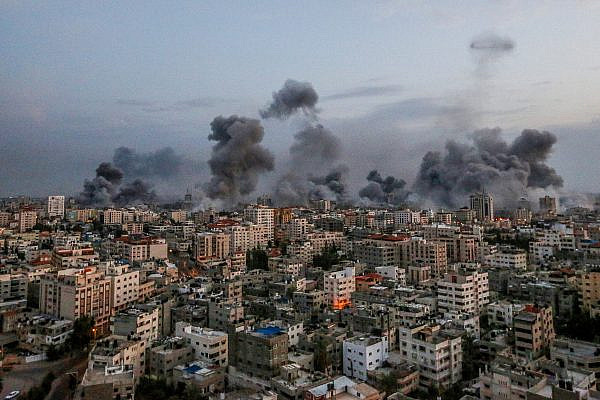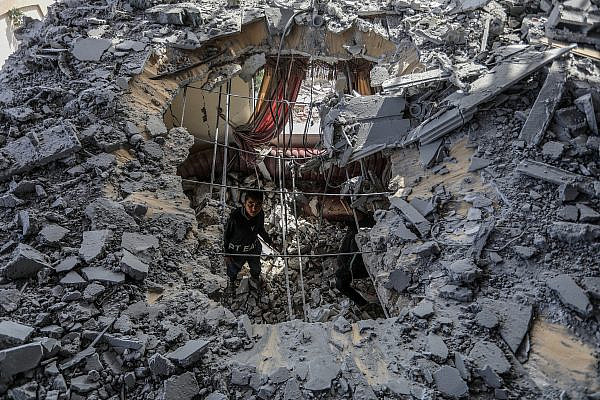STEP 5: CALCULATING COLLATERAL DAMAGE
‘The model was not connected to reality’
According to the intelligence sources, the Israeli army’s calculation of the number of civilians expected to be killed in each house alongside a target — a procedure examined in a previous investigation by +972 and Local Call — was conducted with the help of automatic and inaccurate tools. In previous wars, intelligence personnel would spend a lot of time verifying how many people were in a house that was set to be bombed, with the number of civilians liable to be killed listed as part of a “target file.” After October 7, however, this thorough verification was largely abandoned in favor of automation.
In October, The New York Times reported on a system operated from a special base in southern Israel, which collects information from mobile phones in the Gaza Strip and provided the military with a live estimate of the number of Palestinians who fled the northern Gaza Strip southward. Brig. General Udi Ben Muha told the Times that “It’s not a 100 percent perfect system — but it gives you the information you need to make a decision.” The system operates according to colors: red marks areas where there are many people, and green and yellow mark areas that have been relatively cleared of residents.

The sources who spoke to +972 and Local Call described a similar system for calculating collateral damage, which was used to decide whether to bomb a building in Gaza. They said that the software calculated the number of civilians residing in each home before the war — by assessing the size of the building and reviewing its list of residents — and then reduced those numbers by the proportion of residents who supposedly evacuated the neighborhood.
To illustrate, if the army estimated that half of a neighborhood’s residents had left, the program would count a house that usually had 10 residents as a house containing five people. To save time, the sources said, the army did not surveil the homes to check how many people were actually living there, as it did in previous operations, to find out if the program’s estimate was indeed accurate.
“This model was not connected to reality,” claimed one source. “There was no connection between those who were in the home now, during the war, and those who were listed as living there prior to the war. [On one occasion] we bombed a house without knowing that there were several families inside, hiding together.”
The source said that although the army knew that such errors could occur, this imprecise model was adopted nonetheless, because it was faster. As such, the source said, “the collateral damage calculation was completely automatic and statistical” — even producing figures that were not whole numbers.
STEP 6: BOMBING A FAMILY HOME
‘You killed a family for no reason’
The sources who spoke to +972 and Local Call explained that there was sometimes a substantial gap between the moment that tracking systems like Where’s Daddy? alerted an officer that a target had entered their house, and the bombing itself — leading to the killing of whole families even without hitting the army’s target. “It happened to me many times that we attacked a house, but the person wasn’t even home,” one source said. “The result is that you killed a family for no reason.”
Three intelligence sources told +972 and Local Call that they had witnessed an incident in which the Israeli army bombed a family’s private home, and it later turned out that the intended target of the assassination was not even inside the house, since no further verification was conducted in real time.

“Sometimes [the target] was at home earlier, and then at night he went to sleep somewhere else, say underground, and you didn’t know about it,” one of the sources said. “There are times when you double-check the location, and there are times when you just say, ‘Okay, he was in the house in the last few hours, so you can just bomb.’”
Another source described a similar incident that affected him and made him want to be interviewed for this investigation. “We understood that the target was home at 8 p.m. In the end, the air force bombed the house at 3 a.m. Then we found out [in that span of time] he had managed to move himself to another house with his family. There were two other families with children in the building we bombed.”
In previous wars in Gaza, after the assassination of human targets, Israeli intelligence would carry out bomb damage assessment (BDA) procedures — a routine post-strike check to see if the senior commander was killed and how many civilians were killed along with him. As revealed in a previous +972 and Local Call investigation, this involved listening in to phone calls of relatives who lost their loved ones. In the current war, however, at least in relation to junior militants marked using AI, sources say this procedure was abolished in order to save time. The sources said they did not know how many civilians were actually killed in each strike, and for the low-ranking suspected Hamas and PIJ operatives marked by AI, they did not even know whether the target himself was killed.
Most read on +972
“You don’t know exactly how many you killed, and who you killed,” an intelligence source told Local Call for a previous investigation published in January. “Only when it’s senior Hamas operatives do you follow the BDA procedure. In the rest of the cases, you don’t care. You get a report from the air force about whether the building was blown up, and that’s it. You have no idea how much collateral damage there was; you immediately move on to the next target. The emphasis was to create as many targets as possible, as quickly as possible.”
But while the Israeli military may move on from each strike without dwelling on the number of casualties, Amjad Al-Sheikh, the Shuja’iya resident who lost 11 of his family members in the Dec. 2 bombardment, said that he and his neighbors are still searching for corpses.
“Until now, there are bodies under the rubble,” he said. “Fourteen residential buildings were bombed with their residents inside. Some of my relatives and neighbors are still buried.”





No comments:
Post a Comment